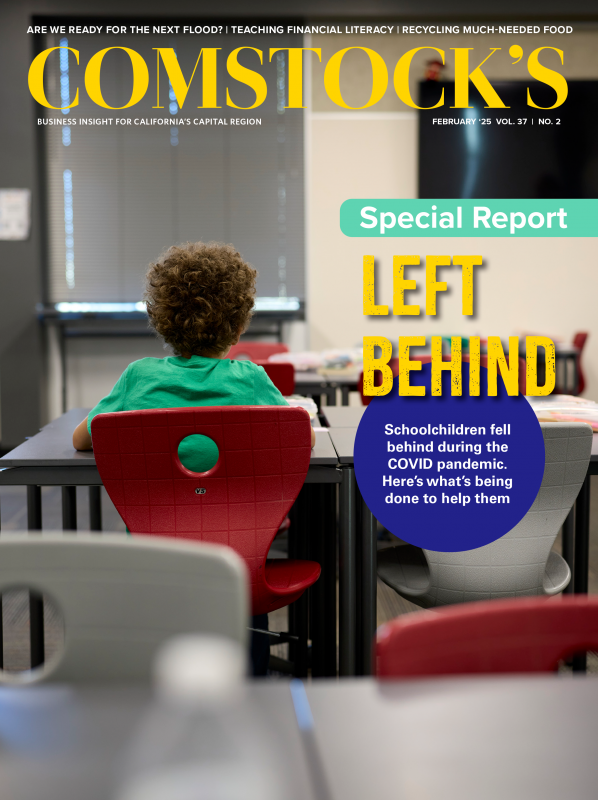Last year, as he campaigned to become Sacramento’s next mayor, state Assemblyman Kevin McCarty proposed legislation that would require students to take a semester of financial literacy courses as a high school graduation requirement.
Many thought it was much needed and long overdue.
AB 2927, which McCarty’s office had been working on for two years with the support of State Superintendent of Education Tony Thurmond, passed in late June 2024 and was soon afterwards signed into law by Gov. Gavin Newsom. It mandates that all schools teaching ninth through 12th grades start offering financial literacy classes by the 2026-27 school year; and, beginning in the 2030-2031 academic year, all students will have to take such a course in order to graduate high school. This will be, says Hector Madueno, the financial education and community development manager for SAFE Credit Union, a “game changer.”
Astoundingly, despite polls showing overwhelming public support for teaching financial literacy skills to school students, prior to the passage of McCarty’s bill California had no statewide requirements around financial literacy courses in the schools. There were no classes on the state curriculum on how to write a check or make and balance a budget. As a result, the infrastructure that does exist around this has largely been developed through the initiatives of a few banks and some forward-looking schools.
In the Sacramento area, SAFE has long partnered with school districts to teach financial literacy — with a specific emphasis on helping students understand how to spend and borrow responsibly, how to save money, and how to financially plan ahead. It has hired two certified financial counselors, and it is in the process of adding some additional employees in this area. In recent years, the credit union has built up particularly strong relationships with three high schools — Rio Linda, Mesa Verde and Cordova — and even opened a physical branch, largely staffed by students enrolled in the financial literacy courses, in which teachers and students can do their banking. “We’ve had numerous students go through the program,” Madueno, who has worked in banking for more than 15 years, explains. “It’s a unique and great experience.”
Now, with financial literacy poised to become a core graduating requirement, the credit union is “hoping to expand it in the years to come in other high schools. This is a strong priority for SAFE Credit Union. To me, the most satisfying job is providing education. I’ve seen the impact of the lack of financial literacy. We can definitely make a difference,” Madueno says.
SAFE’s program, run in partnership with the Sacramento County Department of Education and taught not only in high schools but also in juvenile detention facilities and probation offices, includes a three-hour long “budget sense” simulation based on local rent and food prices, the cost of daycare, expenses associated with maintaining a road-worthy car, and so on. “It’s not as simple as just assigning a course and course work,” Madueno explains. “When it comes to financial literacy, a big part of it is behavior. We let them (students) live through some of the experiences.”
Mayor McCarty did not return calls for this article, but the intent of the legislation that he authored is clear enough. It is aimed at shifting the spending and saving patterns of teenagers in California to give them better tools with which to navigate the financial challenges of adulthood. Indeed, in a news release after the legislation’s passage, McCarty noted that “Taking a finance class in high school can help students make smart money decisions that will benefit them throughout their adult life.”
Because of the importance of this skill set, banks and credit unions in the state have, for years now, been pushing for financial literacy courses to be taught in California’s schools.
“At the bank, we look at financial literacy as important, because it teaches kids coming out to have practical experiences managing their finances: learning to use a checkbook, to balance books,” says Pat Lewis, chief operating officer for the Sacramento-area River City Bank.
“As a banker, yeah, I want to see kids coming out of high school understanding what it is to have income and what expenses are. Too many people don’t understand the concept of debt — and then they get in trouble. I don’t see how there’s a downside to being more financially literate.”
Like SAFE, River City Bank has gotten a head start on the issue, running a Junior Achievement program that brings financial literacy classes into local Title 1 schools, a federal program that provides financial support to schools with a high number of low-income students. Some classes are tailored to children as young as kindergarteners.
Lewis herself — who remembers learning about savings and compound interest as a young child, when her parents gave her nickels and dimes in payment for her doing chores — has taught third graders basic math around the concept of savings, using candy and snacks in lieu of more abstract dollar bills and electronic financial transactions.
Most of the courses, however, are focused on older children. In early 2025, the bank plans to send instructors into three schools to teach these skills. “It’s really at the high school level that they start understanding the concept of money,” Lewis explains. “Because they’re spending money.”
Lewis’s son, Joshua, a 17-year-old senior at Christian Brothers High School, agrees. His school already offers an elective semester-long financial literacy course, which Joshua took this past fall. In the three classes per week, he learned everything from how to craft a realistic monthly budget based around average regional earnings and expenditure needs, and also how to choose stocks to invest in and how to set up foundations. Using Monopoly money, the 25 students in Joshua’s class “bought” stocks and followed the stock market to see how much they would have gained or lost on their investments over the duration of the course. Joshua chose to invest his imaginary $50,000 in Chipotle, Lululemon, Microsoft, Nvidia and JP Morgan.
Joshua’s teacher, Courtney Hendry — who mainly teaches math classes at the school — runs her classes with maximum flexibility; beyond the basics, she tailors the financial literacy exercises to issues her students are interested in, which often involves how to use money to make money.
Hector Madueno, financial education and community development
manager for SAFE Credit Union, set up a “bank” for students at
Cordova High School to learn financial literacy.

“It’s not organized in any typical classroom approach,” Hendry says. “No matter what, being a math teacher it’s very important to teach the basic math curriculum; but I honestly think we have to prepare these adolescents for how to make money and to spend it wisely. That’s my purpose in the class.” She also takes the time to explain to her students why, in addition to earning, spending and saving their own money, part of the purpose of money is to “take care of others too,” and so she explains how to donate to charity, how to engage in volunteer work and so on.
Hendry has learned over the years that she has taught the course that some of her students, growing up in an “immediate culture; we want things now,” have never before discussed money management. Some have parents who are in debt and embarrassed of that fact, and those parents hope against hope the kids will somehow magically learn to manage their finances better than they themselves have done. But, says Hendry, that doesn’t happen of its own accord; instead, it happens through discussions such as the ones she facilitates in her classroom.
“Work with the money you make,” she tells her students. “Don’t live a lifestyle of what you want to make. That’s when people get into trouble and go into debt.”
“I found it very useful,” Joshua Lewis says. “I had friends at my school who did not take the class, and now they regret it. I learned a lot, and going forward I’ll start assimilating things I learned into my life.”
Fellow-student Gabriella Palamidessi, an honors student and school lacrosse player, agrees with Joshua’s analysis. She is applying to universities in California and in Oregon and, following her participation in the class, hopes to study business management. She discusses how the financial literacy class taught her how to fill out tax forms, how to understand stock market fluctuations and how to calculate compound interest. As a result, she says, she became more aware of the importance of making sound financial decisions as a young adult — and of how the benefits of those decisions accumulate over the decades. She also came to understand the world of small business — her father works in real estate — better than she had previously.
Before she took the class, Gabriella admits, “I was just spending a lot of my money.” She pauses and laughs. “My mom’s money, really.” She continues: “It just taught me to save. Because you never know when you’ll hit a roadblock and have no money. It taught me how to invest in my future. I really just learned a lot from this class; the importance of investments and savings. It’s better to start earlier than later.”
Gabriella’s mom, Tish, who has a state job working in communications, recalls in amazement how her daughter would come home from school after these classes and engage in animated discussion with her parents about compound interest.
“I think it’s so important that we had to have legislation to make this something that happens for our kids,” Tish says. “It got her (Gabriella) more involved in dinner conversations. It’s life skills she’s going to use every day as an adult.”
With the passage of AB 2927, Pat Lewis says, “More folks will have to get into gear and teach financial literacy curriculum.” And that, she believes, is an unmitigatedly good thing. “I don’t see,” the banker says, “how there’s a downside to being more financially literate.”
Hendry couldn’t agree more. The two years that she has taught the financial literacy class at Christian Brothers have made her realize just how important this subject is. “It’s not my typical geometry class setting — there’s a lot more dynamism, because it’s real,” she says. “Adulting is not always as fun as you think. It is a lot of responsibilities.”
Stay up to date on business in the Capital Region: Subscribe to the Comstock’s newsletter today.
Recommended For You

Is Sacramento Ready for the Big One?
Levees and dams are being repaired and expanded to prepare for a future flood
Climate change is increasing the strength of Sacramento’s winter storms. Higher temperatures allow atmospheric rivers to carry more water, research shows. Climate change is also jacking up other flood risks, such as sea rise and snowmelt. All this is raising the chances of catastrophic flooding in Sacramento.
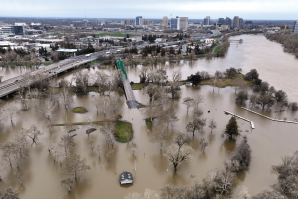
Drought and Deluge
Experts are racing to protect the Central Valley from a catastrophic flood
Unlike “The Big One” earthquake that is overdue along the San Andreas Fault, experts don’t have an ominous name for a flood of biblical proportions that is likely to inundate the Central Valley within the next 500 years.
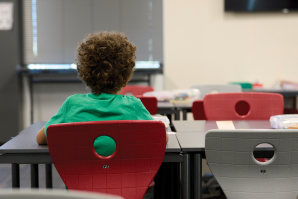
Sacramento-Area Schools are Still Grappling With Academic and Social Recovery From the COVID-19 Pandemic
Around the Capital Region, schools are still working to recover socially and academically from the COVID-19 pandemic. Test scores have been affected, as has school attendance. A new wave of behavioral issues has unfolded, too. Now, a variety of people are working to help students catch up.

What the State Is Doing to Help Education
Efforts by California’s government to help students recover from the pandemic go back to its earliest days, with the state investing more than $36 billion to deal with pandemic impacts. The funding has gone to Learning Recovery Emergency Block Grants, expanded teacher recruitment, literacy specialists and much more.
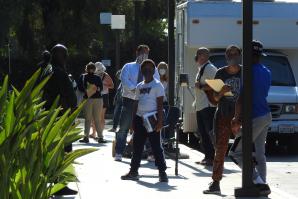
The Pandemic Made Many Parents Get More Involved in Their Children’s Education
“I think what the pandemic really did was just lift the curtain on what was taking place in the classroom and at the administration level for parents to see,” says Justin Caporusso, a Roseville father of four and owner of Caporusso Communications. “A lot of parents saw how much time was spent on classroom management, behavior and really how little time was spent on kind of overall education.”
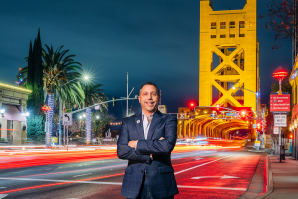
New Year, New Administration. What Can We Expect?
The Capital Region’s economy in the first half of 2025 should be unspectacular but steady, forecasters say
The apocalyptic tenor of the recent election made it seem disaster was inevitable no matter who won. But at least on the economy, the first half of 2025 should be a sigh of relief, letting most businesses stick to small ball.
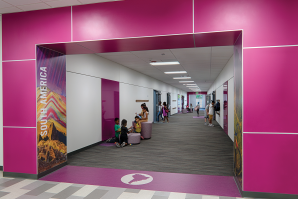
Architects Respond to the Growing Population of Minority, Immigrant and Refugee Students With Culturally Sensitive Design
The influx of immigrants and refugees from a multitude of different countries has created an opportunity and a challenge for Capital Region architects to design educational spaces with greater cultural sensitivity that provide a sense of belonging for new students and families.

What’s on the Horizon for California’s Public Lands?
With less funding in the current budget, the management of public lands is likely to change substantially, and this may have massive and unforeseen consequences for Californians.

The Power and Potential of Seaweed
From keeping oceans healthy to being used as an alternative to plastics, researchers believe seaweed has a multitude of uses
Nearly 2,000 miles northwest of Sacramento, Matthew Perkins rode a boat out into the Gulf of Alaska and saw nothing but endless potential for growth. “It’s kind of overwhelming how much opportunity there is,” he says. “You’re on the water, snow-capped mountains in the backdrop, you look down and see this incredible biomass growing. It’s literally the bounty of nature.”
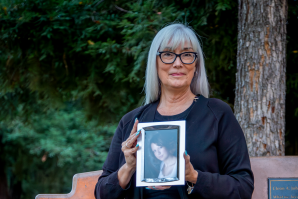
The Life-Saving Organ Trail
How new technology is helping transplant centers send and receive organs from great geographic distances
In 2022, the United States Food and Drug Administration approved the TransMedics Organ Care System, or OCS device. Known as the “heart in a box,” this device uses normothermic perfusion to pump blood through a removed heart and preserve it for longer periods until it can be transplanted into a new person.




